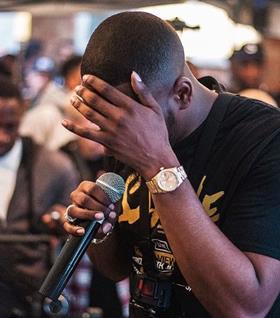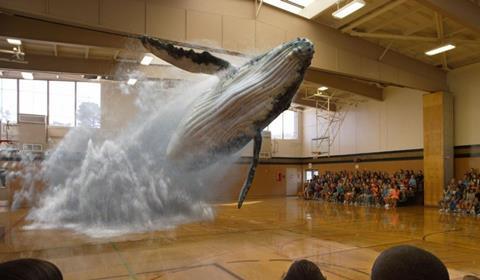A raft of new technology is enabling people to watch their favourite artists in many different ways – and all from the comfort of their own homes.

I’ve never been to Glastonbury festival, but everyone who has always says I ‘have to go!’ It’s true I would’ve liked to have seen Beyoncé or The Rolling Stones. But I also like staying dry, a minimum standard of hygiene, and personal space.
Watching the festival on TV with a hot cup of tea and the knowledge that a clean bathroom with toilet paper was available to me at any time always felt like the better deal. Not to mention saving time, money, hassle, and getting to see and hear the artists better than most of those poor muddy people.
Nowadays, however, there are many new ways for people to support their favourite artists from the comforts of their own homes.
Recently, when grime artist SafOne’s show at the Birmingham O2 Academy was cancelled after he’d been shot, instead of giving up or searching for another venue, he decided to cut out the middleman and do things his way.

Performing in a secret location, fans from around the world, including Russia, Japan, Vietnam, and the US, were able to buy tickets to tune in to a live stream of the performance in a pay-per-view (PPV) model, making hip-hop history.
During an interview with Buzzfeed SafOne said, “A lot of artists for numerous reasons can’t perform when or where they want, so PPV is basically a fresh road that allows the supporter and artist to never have to miss out.”
MelodyVR is a platform that sells tickets for concert viewing in 360-degree video. Fans watching from their own devices can choose from multiple viewing locations, switching between a first row audience experience to actually being on stage next to their favourite musicians as they perform.
“The way we look at our services is, if you can’t be there, it’s the next best thing… When you have venues that sell out in a matter of minutes, we want to give fans an alternative” - Anthony Matchett, MelodyVR
MelodyVR CEO Anthony Matchett told Sky News that they aren’t trying to replace the real thing. “The way we look at our services is, if you can’t be there, it’s the next best thing… When you have venues that sell out in a matter of minutes, we want to give fans an alternative to having to pay five times the price for a concert ticket, and if you are on the other side of the world, you simply can’t get there, so giving them the opportunity is really important to us.”
Live streaming in 360-degree is still reliant on having a super high-speed internet connection, so at the moment the focus remains on pre-recorded shows, though watching live is expected to pick up in the years to come, especially with the help of 5G.
- Read more Has VR scored at the world cup?
But not everyone is convinced that 360-degree video is more engaging than watching a show on a 2D screen. One source I spoke to compared concerts in 360-degree video to going to “a shit party where everyone’s ignoring you and you can’t move or speak.” It may also be less of an inclusive experience and more a reminder of what you missed out on.
Using the most advanced technology to replicate one of the most primal experiences of live music enjoyment almost seems counter-intuitive. Yet by changing the context of the audience experience into something completely new and modern, virtual reality (VR) challenges perceptions of how music can be appreciated.
A free VR app, TheWaveVR has been called “a mesmerising and trippy take on the future of music festivals.” Here you can learn to deejay, host parties, and witness your favourite artists in an immersive, vibrant, social environment. Music creators can customise audience experiences by transforming the venue and crafting synched light shows to enhance the listening experience. Fans don’t have to travel to see their favourite musicians or festivals, and can share live events in the Metaverse with friends from around the world. Add to this the wearable Subpac, a vest that transmits low frequency sounds into vibrations felt on the body, and one can have an even more enhanced, reality-like experience.
One local London band is using virtual and mixed realities not to provide experiences to people at home, but to enhance their live concert experience. Signed to a major label, Miro Shot are known for their immersive, multi-sensory shows. Audience members are given VR headsets that switch between MR where the band can be viewed performing, and VR content veejayed live.
- Read more The cutting edge of VR production
“Creative revolutions come from technology,” says Roman Rappak, frontman and co-founder of the musical collective. “Flipping from reality to MR to VR gives a new context to music. For instance, Gregorian chants were composed to be heard in echoing spaces. New context allows for new music, and that’s why I think this is one of the most exciting times ever for music.”
Co-founder and Chief Marketing Officer of DoubleMe, James Edward Marks, also sees The New Realities (AR-VR-MR) as a new medium, one that combines all art forms and turns everyone into creators.
“Creative revolutions come from technology. Flipping from reality to MR to VR gives a new context to music…New context allows for new music, and that’s why I think this is one of the most exciting times ever for music” - Roman Rappak, Miro Shot
With a home at Ravensbourne University, DoubleMe has launched the HoloPortal™, the UK’s first facility that captures still or moving objects, and generates 3D virtual doubles that can be seen and used in VR, AR, or MR experiences. When I visited last week I danced in a room with two motion capture scanners, while a hologram of my moves was ‘holoported’ into another room as a hologram viewed through a HoloLens in real time. A real Star Trek moment, it was one of the coolest things ever!

Giving us the power to transcend geographic barriers, this technology is helping people to connect in new ways. It was recently used to allow two businessmen on opposite sides of the world to sign a million pound deal as if they were in the same room, and to unite a homebound child with his grandfather who lives at a distance for a play date.
Artists and speakers may find in the near future that instead of traveling to distant locations for gigs they can be holoported in, delivering performances live and with the ability to interact with an audience. This could eventually have a significant impact on travel expenses, the environment, and stadium size.
LoopSpace™ is DoubleMe’s forthcoming app that will become the YouTube of the Metaverse. This will allow for greater collaborations across geographic locations as people can holoport into each other’s spaces to star in videos together, as well as upload and share. You can even charge for use of your 3D, hologram-like creations, retaining the rights to the data.
The music industry should also be taking notes from the sports industry, as they have invested heavily in The New Realities. In February 2018 Magic Leap announced a partnership with the NBA working towards changing the future of how sports are broadcast. Instead of multiple cameras, the new proposed system is for broadcasting sports in 3D to be viewed in MR. This would require multiple, smaller, super high-resolution fixed cameras around a venue that would send all the data to a backend computing stack. Perhaps we will soon see stadiums upgrading and venues offering a second tier of ‘virtual tickets’ to those who can’t make the live event.

CEO of Magic Leap Rony Abovitz said at a press conference, “[We will] move from standard 2D television broadcasting to full volumetric capture. That’s probably going to take a decade before you see it happening across multiple sports and news, but you’ll see early adopters.”
Whether it’s artists using pay-per-view models to take back control of their own payment structures, or 360° film increasing access to musicians, these are all signs that the future is close at hand. The music industry is evolving faster than ever before, making it an exciting time to see what happens next. While some fear that the rise of virtual and mixed realities may hurt venues, it can also be predicted that these new technologies will open up new revenue streams, attract new audiences, and push the boundaries of what’s artistically possible.
The New Realities don’t diminish reality. They extend and enhance reality, making a new context that is daring artists to be as creative, imaginative, and expansive as they can possibly be. We can’t forget that people go to Glastonbury for the mud, sights, sounds, smells, and taste of it, and no technology can ever fully replace the live human experience… Yet.



























No comments yet